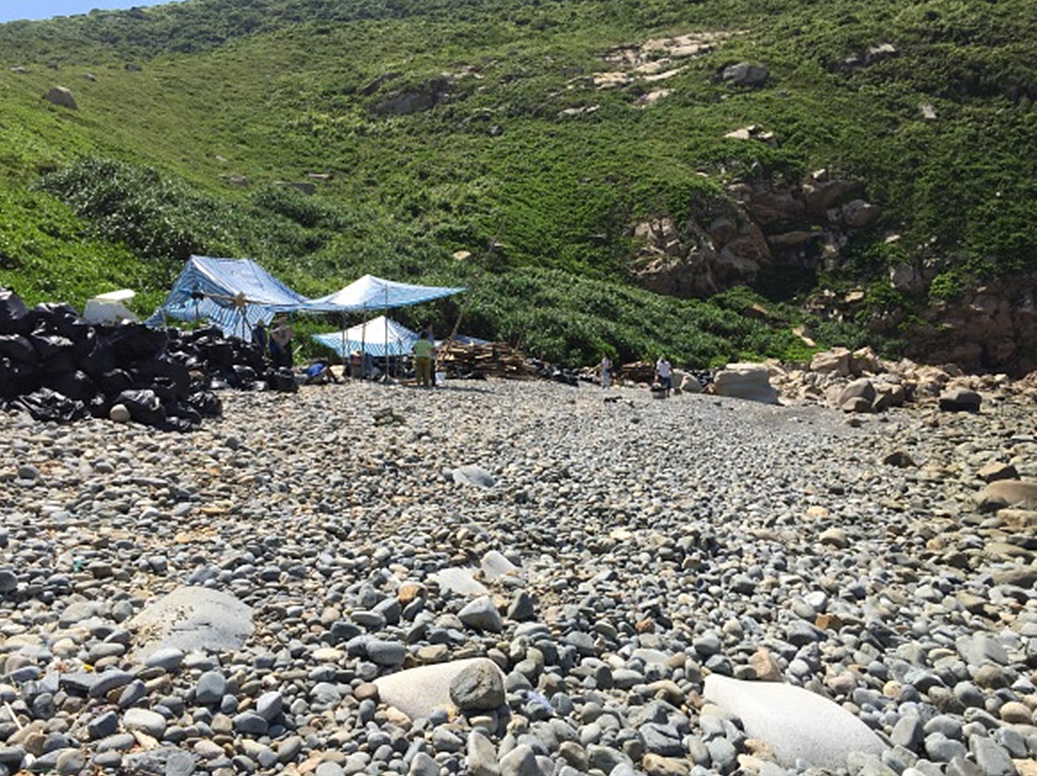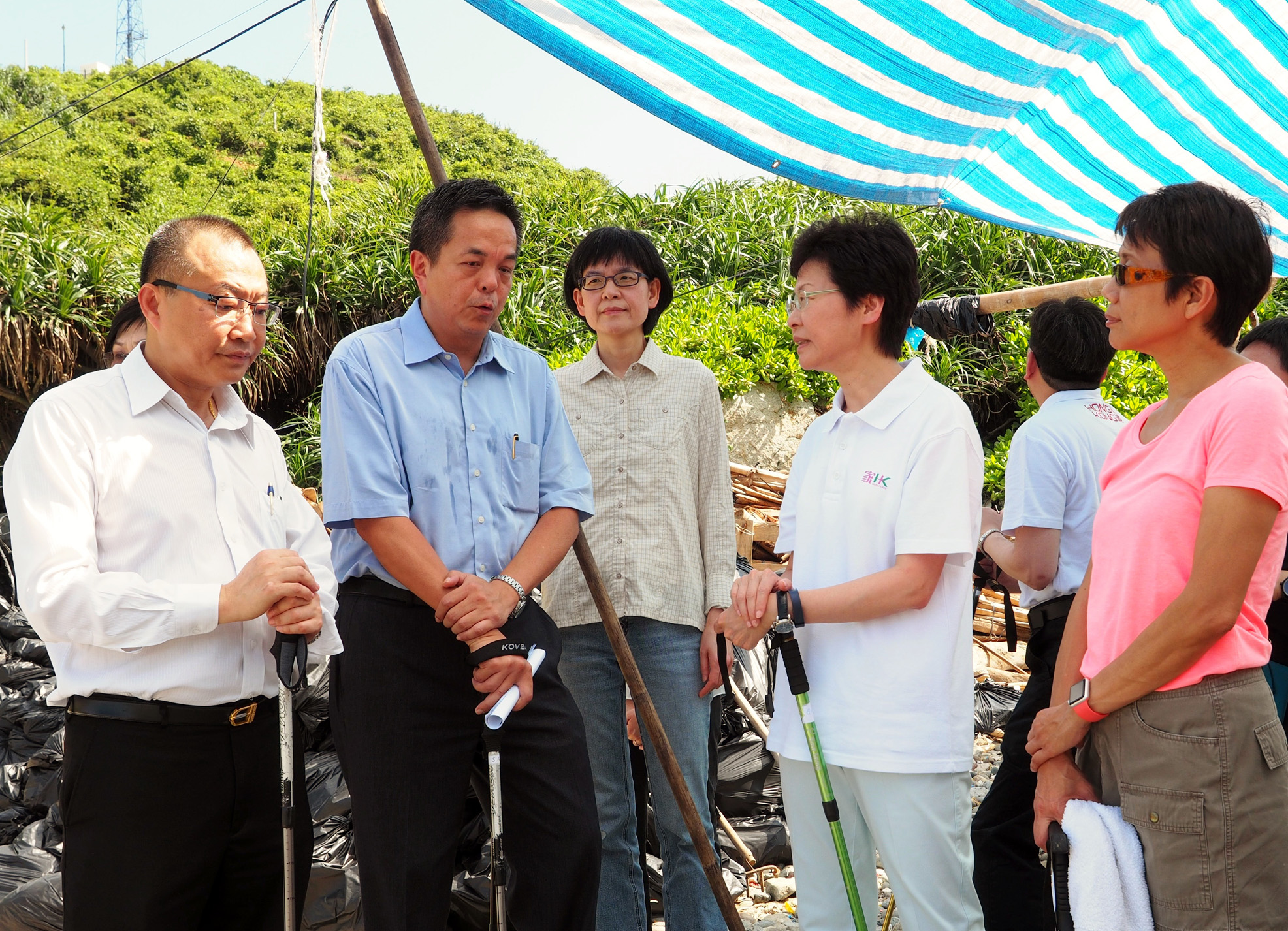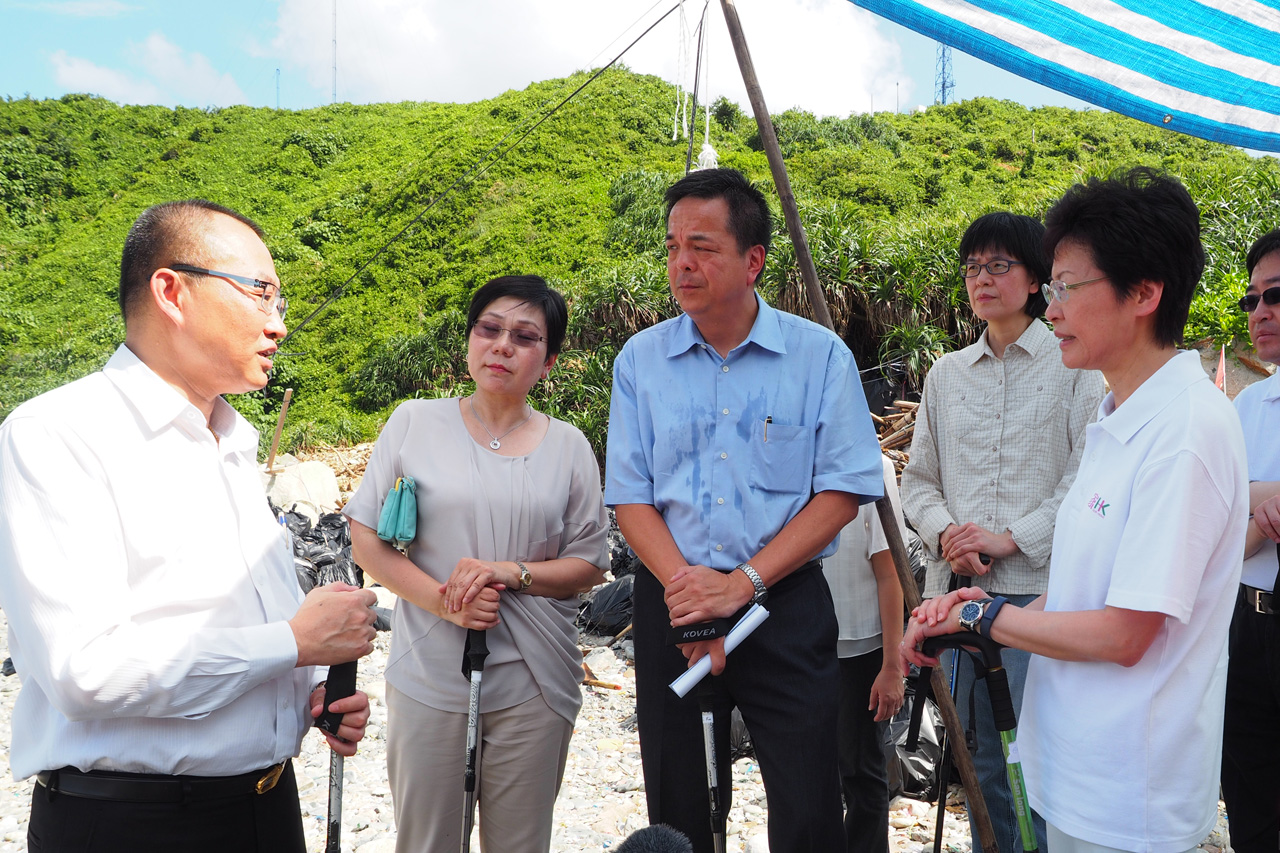The Chief Secretary for Administration, Mrs Carrie Lam, inspected cleaning work at Lap Sap Wan, Shek O, on 28 July 2015 and received a briefing on the work on shoreline cleaning by various departments. Mrs Lam was accompanied by the Secretary for Food and Health, Dr Ko Wing-man; the Acting Secretary for the Environment, Ms Christine Loh; the Director of Environmental Protection, Ms Anissa Wong; and the Director of Food and Environmental Hygiene, Miss Vivian Lau.
The Inter-departmental Working Group conducted a comprehensive study on marine refuse in Hong Kong. The study indicates that wind direction and water currents have a marked effect on refuse accumulation in coastal areas. It has identified 27 priority sites prone to refuse accumulation for the relevant Working Group departments to strengthen clean-up activities. Lap Sap Wan is one of the priority sites prone to refuse accumulation. To restore the cleanliness of the site, the FEHD and the MD have conducted a joint operation to clear most of the refuse accumulated on the shoreline. The FEHD will also conduct regular clean-up activities at Lap Sap Wan in the future.
Progress of Cleanup Operation
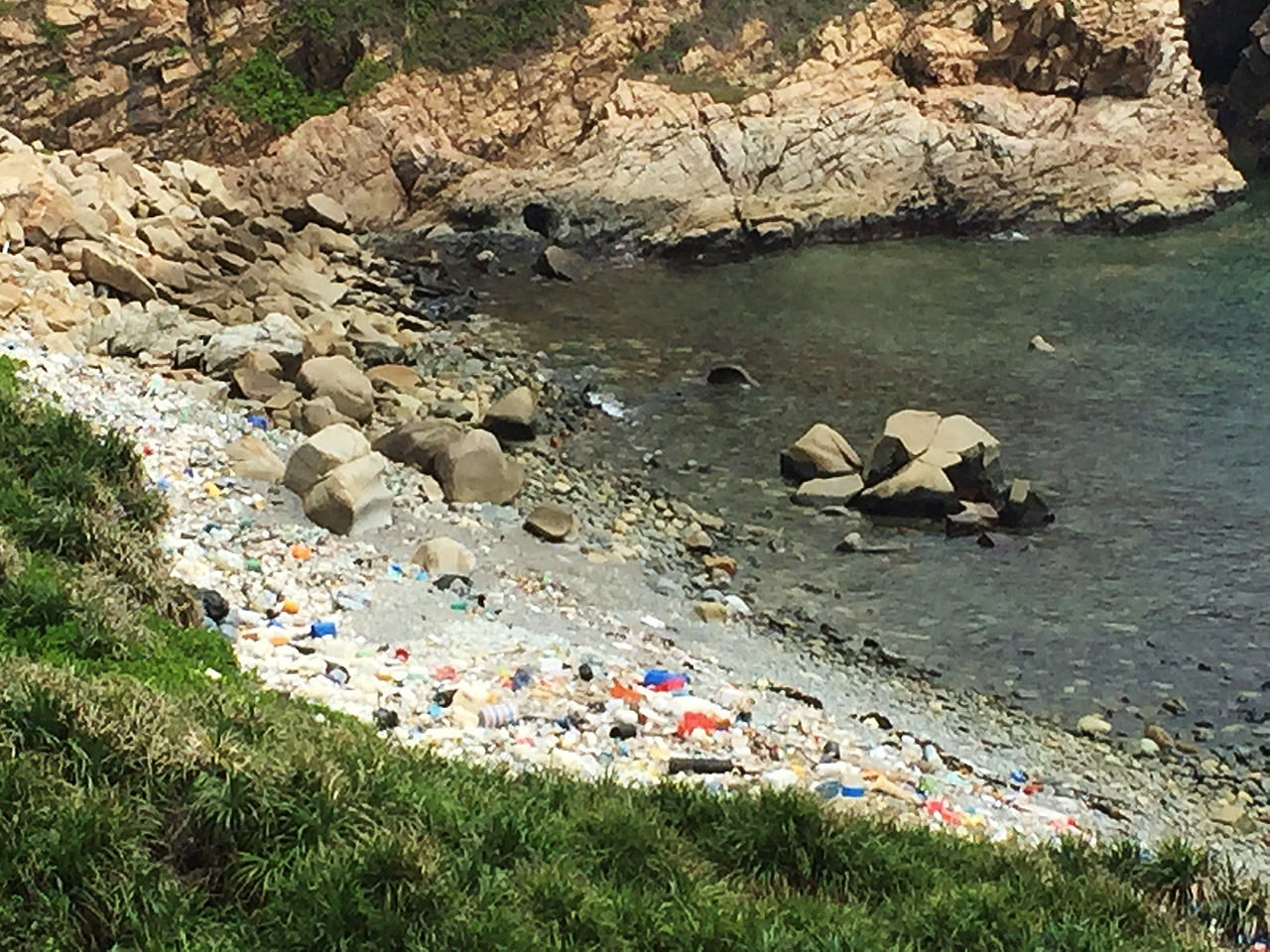
(Before cleanup)
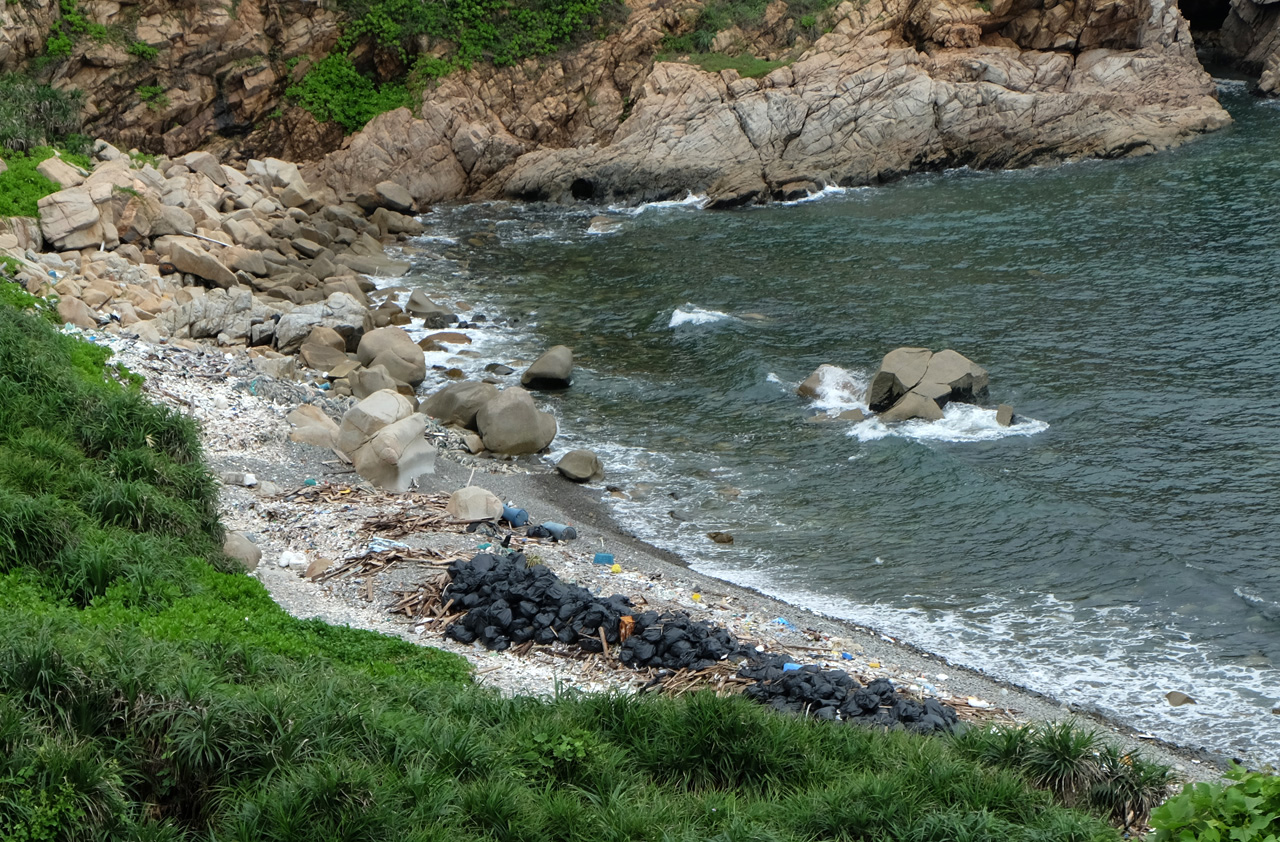
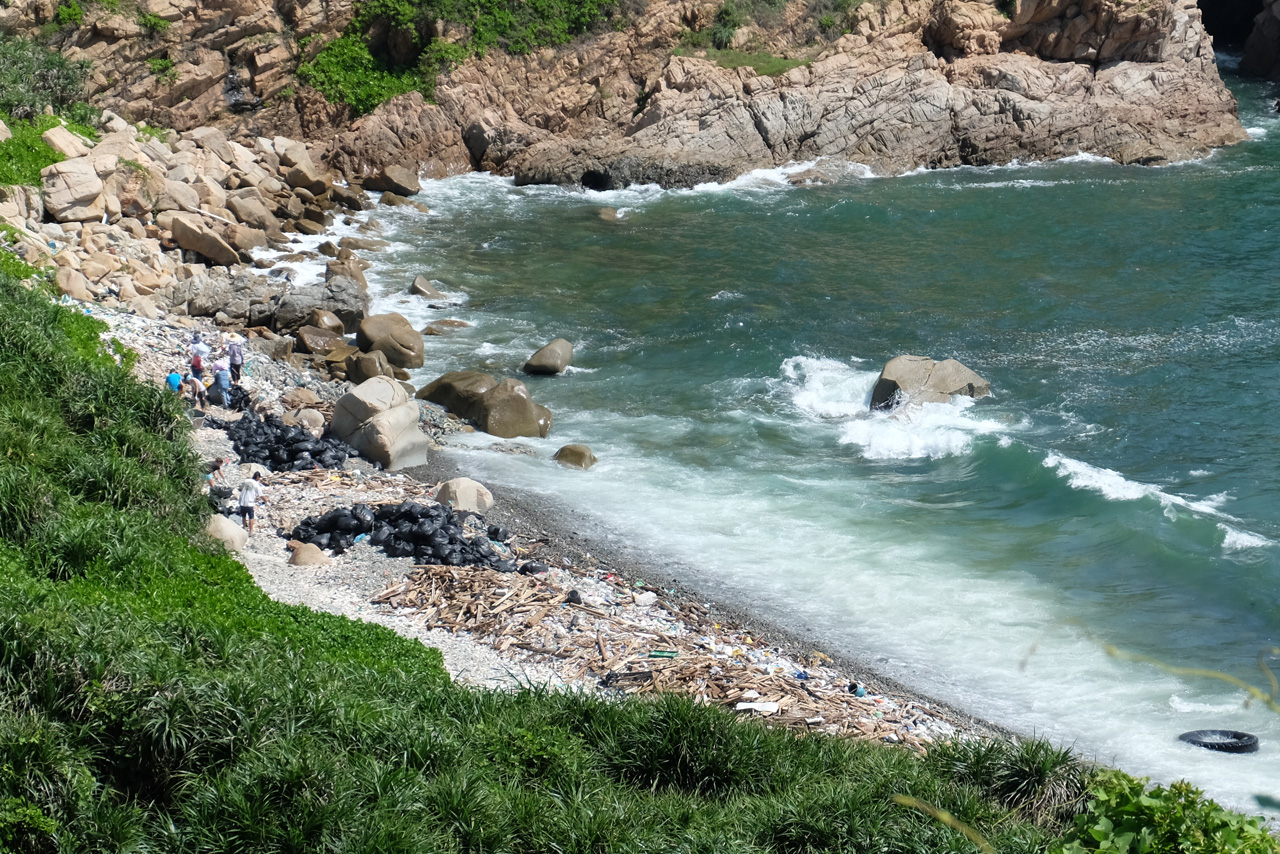
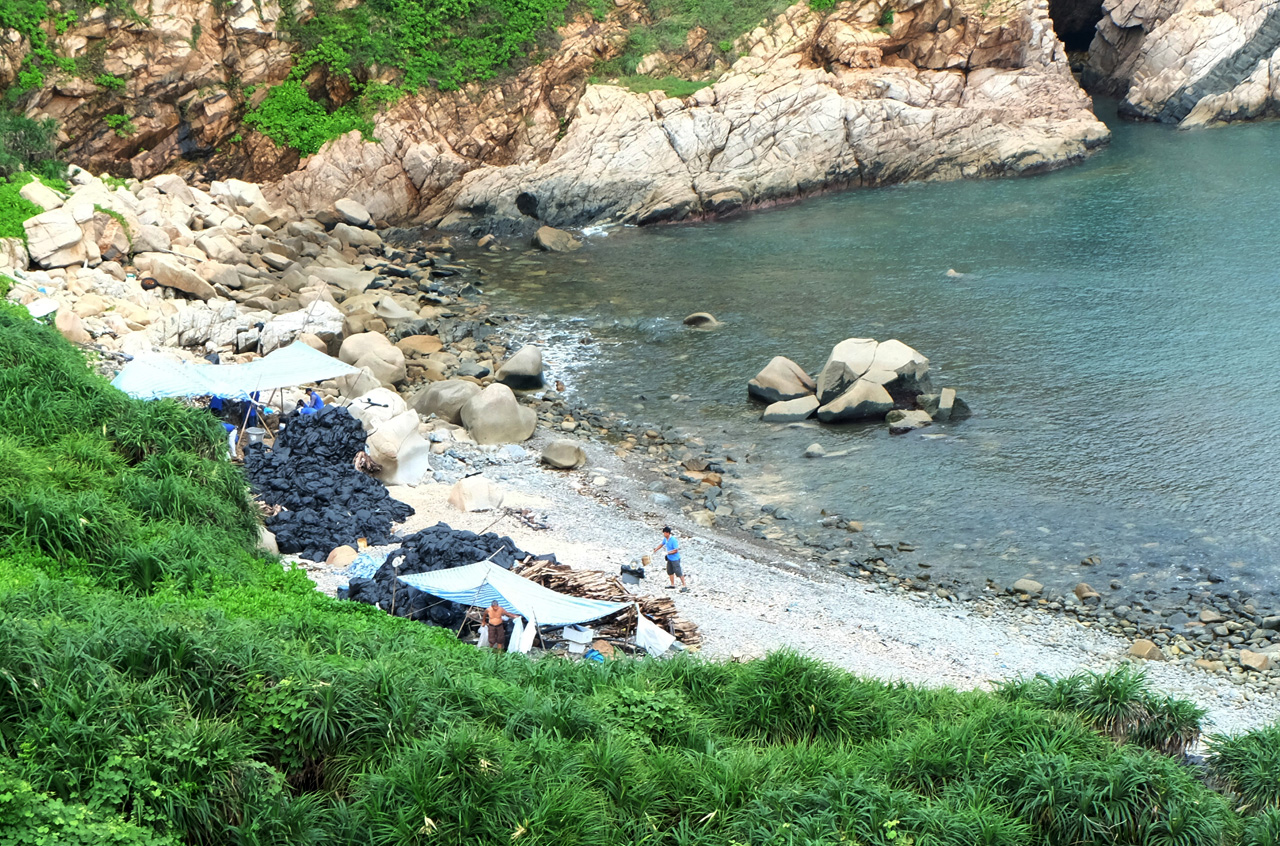
(After cleanup)
Cleaning up the beach was no easy task due to technical, weather and safety concerns. The whole operation took place in about three months, from May to August 2015, including a trial run in mid-May to try out the cleanup method by the FEHD and MD. About 8,860 bags of refuse and some timber were collected. FEHD’s contractor packed the refuse into plastic bags, before handed over to MD’s contractor which shipped the bags of refuse and timber to the Ap Lei Chau Marine Refuse Collection Point and loaded them onto a grab lorry for disposal at landfill.
